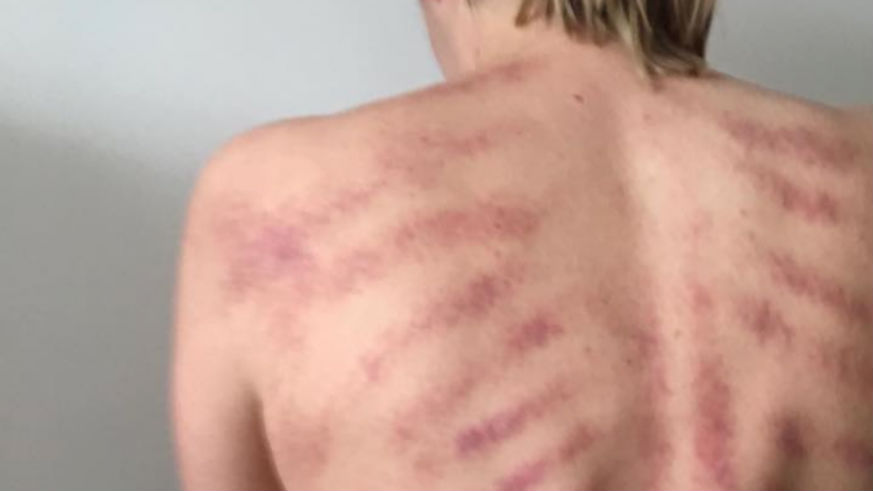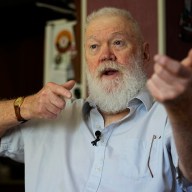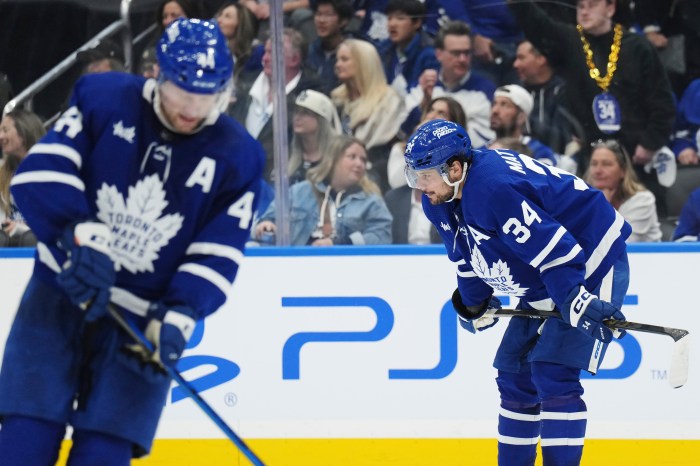Michael Phelps started a trend when he showed off a back full of circular bruises during the 2016 Summer Olympics, a result of the massage technique known as cupping. The welts looked painful, but they’re nothing compared to another massage technique that’s gaining popularity on social media: gua sha.
“To reset your muscles we need to gua sha all the scar tissue and then pin and stretch your muscles and then re-align your spine so when you do you do your yoga exercises it has a greater affect (sic),” Hitesh Patel, a certified massage therapist based in Leicester, U.K., wrote in a Facebook post that featured a client with over a dozen red lines streaking across her back. The client sought out the treatment to alleviate the aches and pains she developed after spending hours on her feet as a hairdresser.
It might look painful, but fans of gua sha say it works wonders to work out strained muscles. “Your muscles develop and stop holding your skeletal system in an unnatural off central position,” Patel wrote. “So then when you finally do you put down your crimping equipment. And try and sit down and a natural neutral position it just doesn’t work.”
What is gua sha?
Gua sha might be trending thanks to Patel’s post with almost 25,000 shares, but it’s actually an ancient Chinese technique that’s passed down from generation to generation. It’s been described as similar to cupping, “but way more intense” and involves scraping the skin with various blunt-edged tools to loosen and break up “knots” in muscle tissue and fascia. Fans and practitioners also claim it helps increase blood flow, clear toxins and improve inflammation and the immune system.
The red lines are a result of blood that’s “pooled and stagnated,” Patel told Cosmopolitan. The lines typically go away after a few days, but some people don’t experience any redness.
Does gua sha work?
The jury’s still out on the effectiveness of gua sha.
A small study of people with neck pain found that those treated with gua sha reported less pain a few after treatment than the placebo group. Another study of a 72-year-old woman with chronic migraines found that gua sha helped decrease her pain, while another study showed that the treatment helped lower the liver enzymes in a man with liver inflammation.
But not everyone is convinced.
“There’s no data that proves it’s truly more helpful than simply applying heat or ice or taking medication like ibuprofen,” Robert Glatter, M.D., a physician and assistant professor of emergency medicine at Northwell Health’s Lenox Hill Hospital in New York, told Cosmopolitan.
Glatter added that there are some risks with gua sha treatment, including rhabdomyolysis, a condition where muscle fibers actually break down and enter the bloodstream, causing everything from severe kidney damage to death. He recommends other techniques, like physical therapy and stretching, to relieve muscle pain, but “for people who don’t want to take traditional medications and are searching for alternative or complementary methods of pain relief, it’s a reasonable thing to try,” he told Cosmopolitan.
“But more research is needed to determine whether it’s truly going to help in the long run.”



















